Ginger is an essential ingredient in many savory and sweet dishes, and it adds taste and flavor. Learn how to store ginger correctly with this detailed guide so that it is readily available throughout the year.
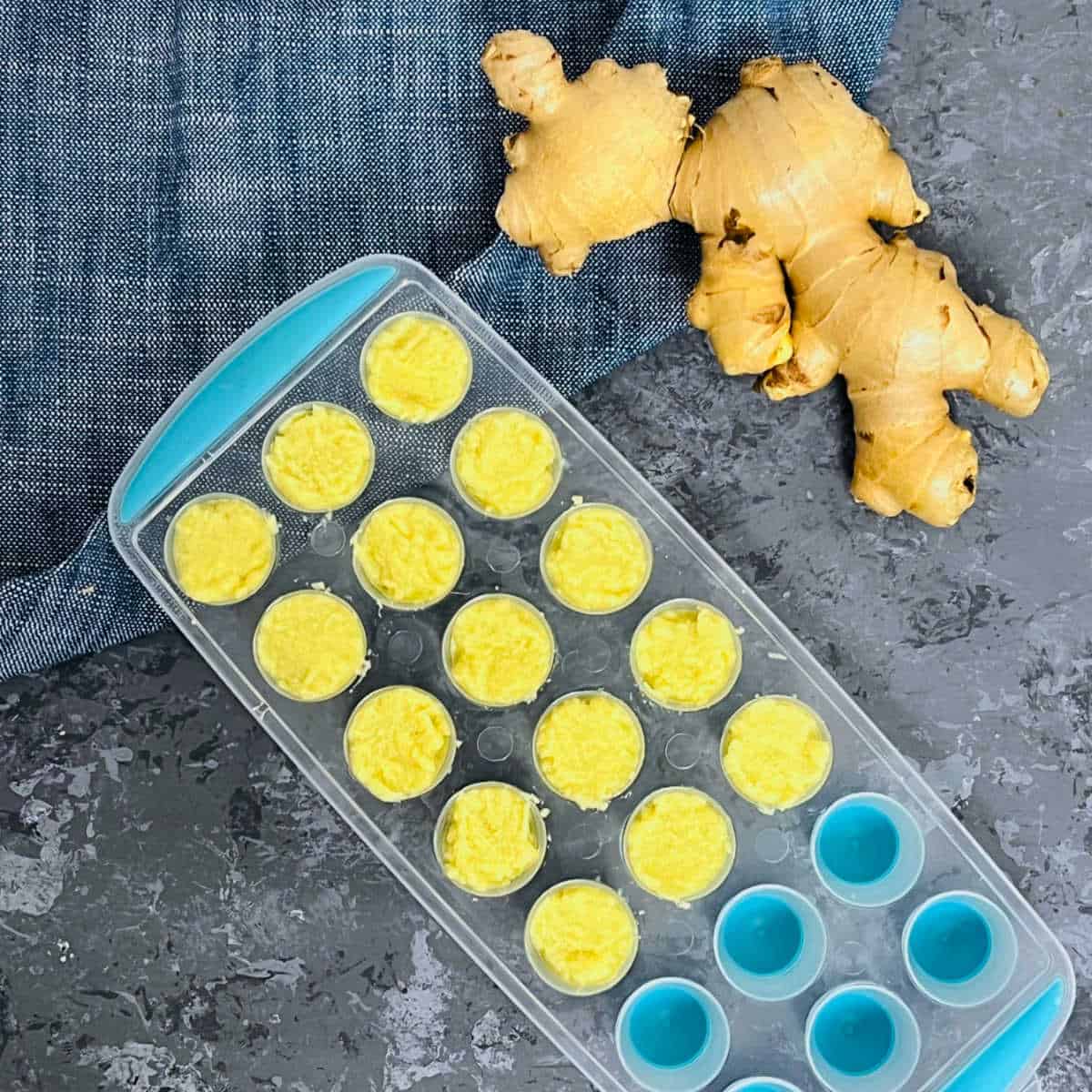
What is ginger
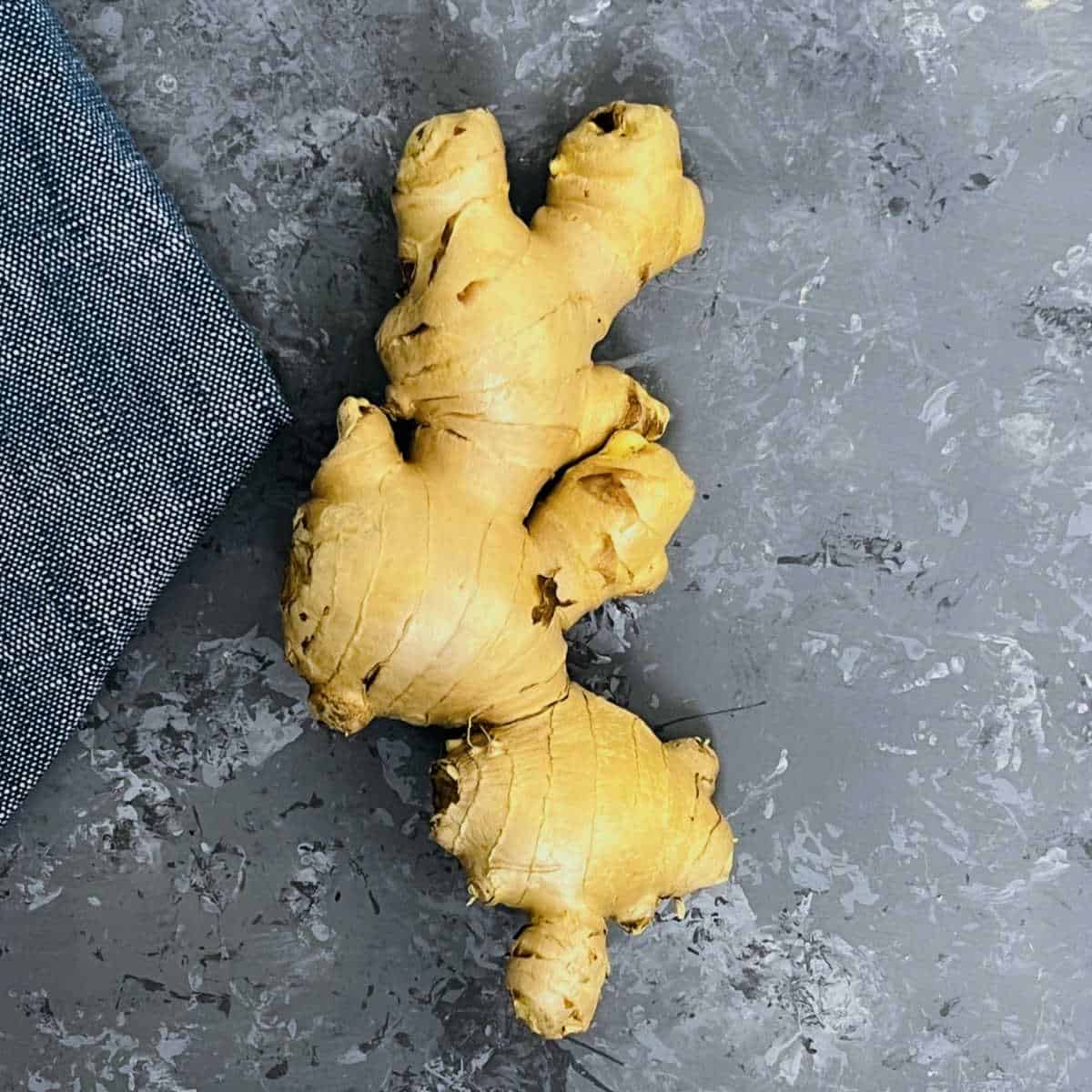
Ginger is a globally appreciated rhizome with a warm and spicy flavor that enhances a wide range of culinary creations, including savory dishes, sweets, and beverages like ginger tea. Ginger thrives in warm climates and can be challenging to obtain locally during colder months. Prep and freeze it, and you will never run out of this versatile root.
Freezing fresh ginger root is the easiest way to increase its shelf life and also makes it very convenient to use. Use it straight from your fridge or freezer without the need to defrost and add it to curries, stir fry, and more.
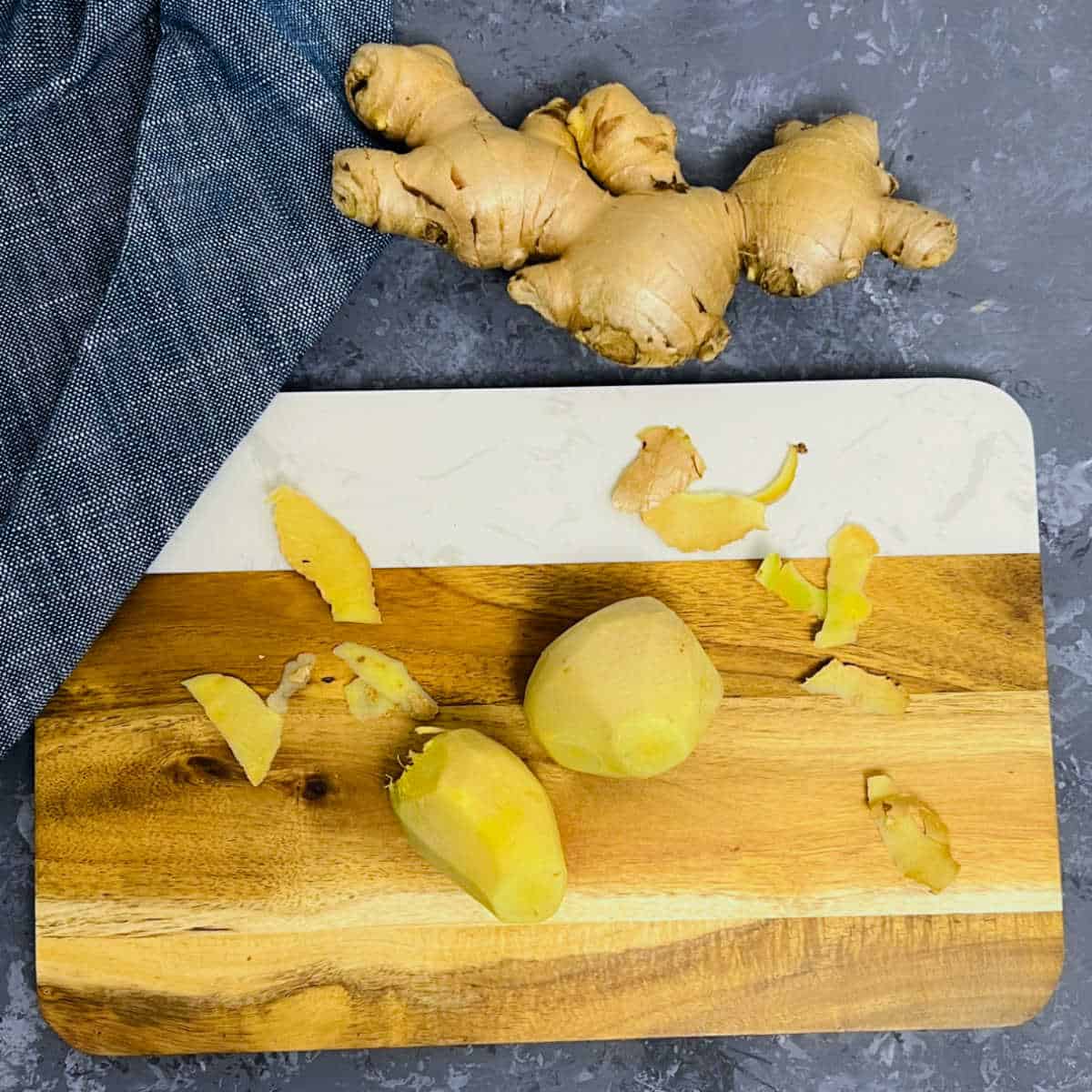
How to use ginger
Ginger is versatile and widely used in various cuisines. Depending on the recipe, you can prepare ginger in different ways:
- Finely chopped or minced: Used in curries, stews, stir fry, or salads.
- Grated: Used in salad or dipping sauce.
- Sliced or cut in large chunks: Use in beverages for infusion and in stews.
- Paste: Used in marinades and curries.
- Julienned: Used as a garnish or in stir fry.
For example, sliced ginger can be used to make masala chai, and minced ginger is used in curry sauce. Topping finished dishes with julienned ginger is a great way to add freshness and zing to them.
Ginger skin is edible, but it's best to peel it before storing. Use a vegetable peeler, paring knife, or the back of a spoon to peel ginger easily, minimizing food waste.
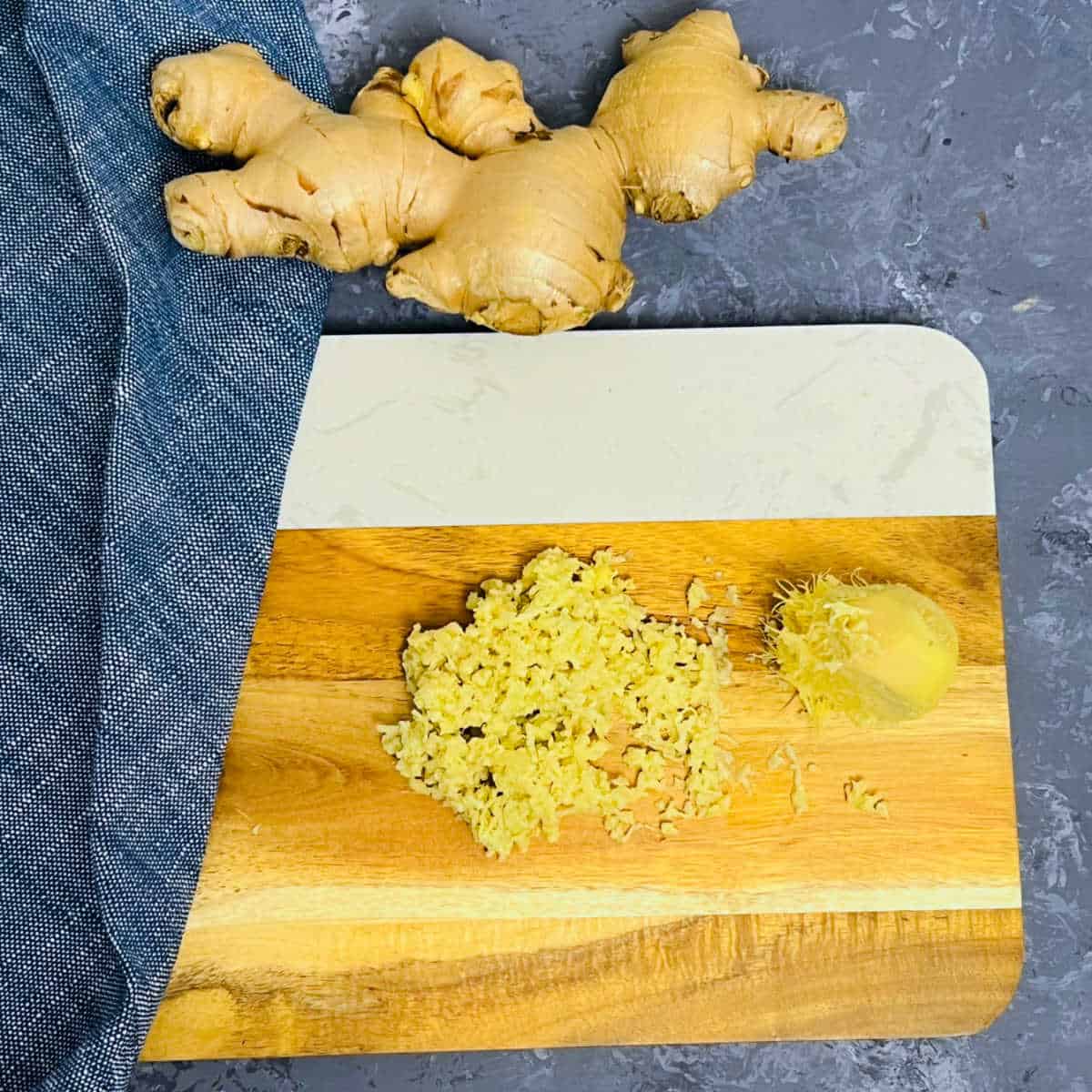
Storing ginger root
Room Temperature (Short Term): Keep the ginger in a cool, dark place at room temperature if you plan to use it within 8-10 days. Ensure it's clean and dry to prevent mold.
Refrigerator (Medium Term): Clean and dry the ginger, wrap it in a paper towel, and store it in a resealable plastic bag in the crisper drawer. It should stay fresh for about a month, with the paper towel absorbing moisture.
Freezer (Long Term): Freeze ginger without peeling it. You can store whole pieces or cut them into chunks. Place it in a freezer-safe bag, and it will last for 6-8 months. Grate ginger directly from frozen when needed.
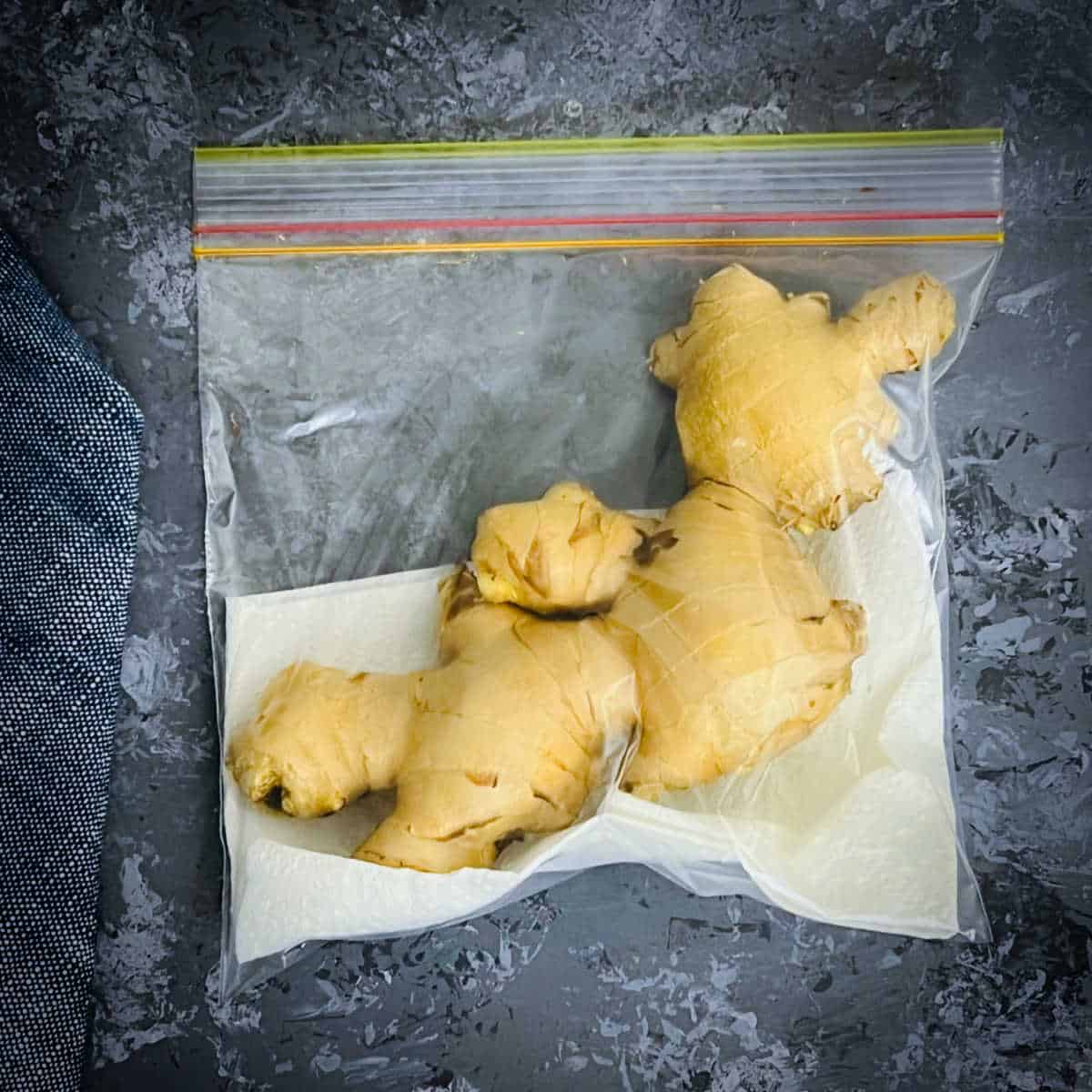
Storing ginger paste
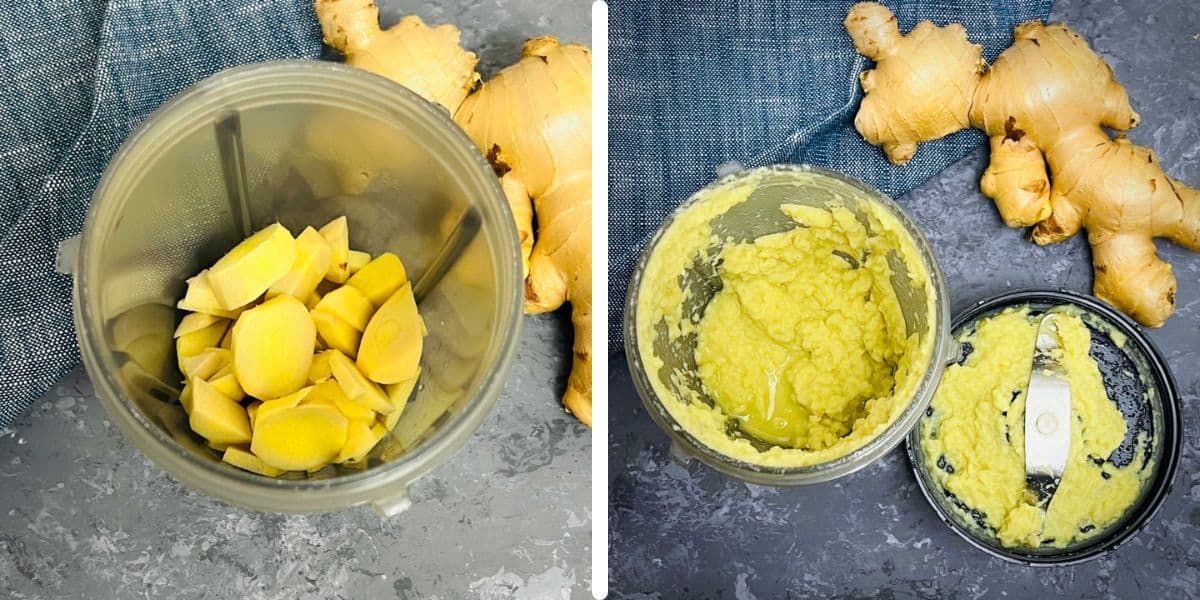
Step 1: To make the ginger paste, peel and chop ginger into smaller pieces. Place them in a blender or food processor to make a fine or coarse paste. The moisture content in the ginger is enough to grind it; however, if you want a fine paste, add very little water for grinding.
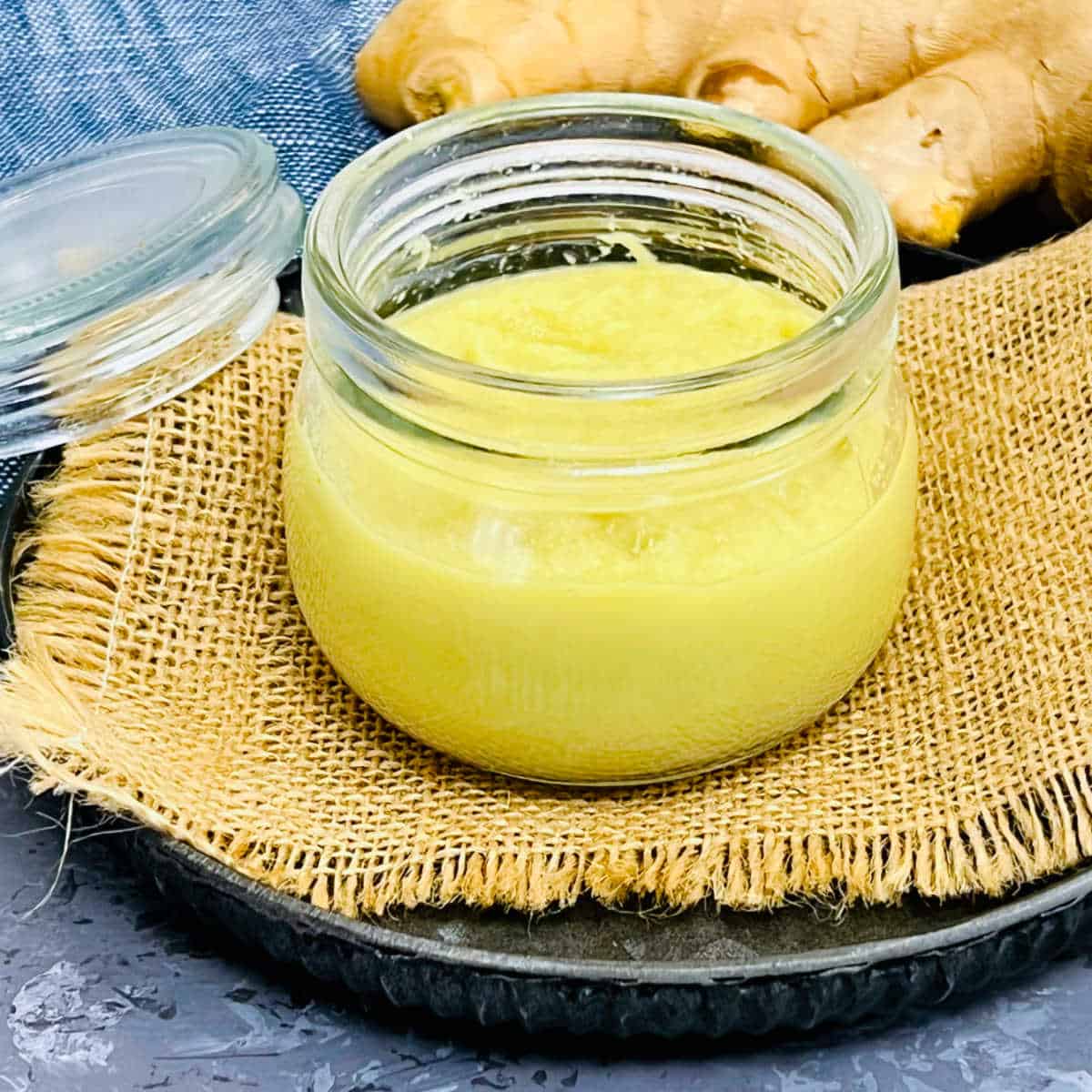
Step 2: The ginger paste can be stored in the refrigerator for up to one week. Make the ginger paste and place it in a clean, airtight container. Always use a clean and dry spoon to take the ginger paste and place it back in the fridge immediately after use.
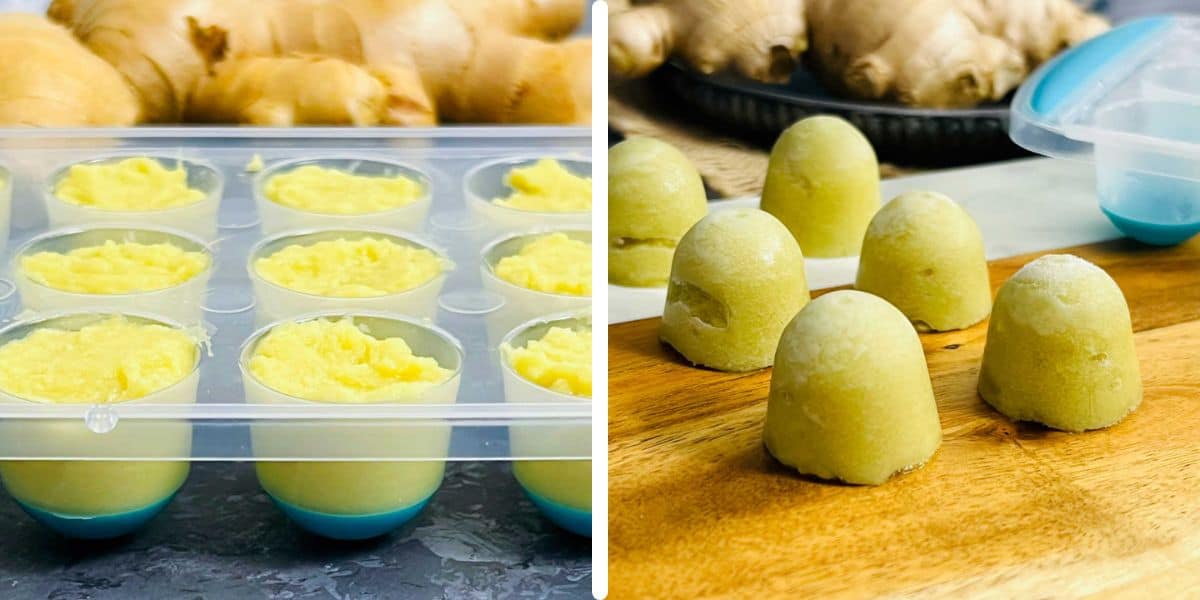
Step 3: To freeze ginger paste, place the ginger paste in ice cube trays and place it in the freezer until it freezes.
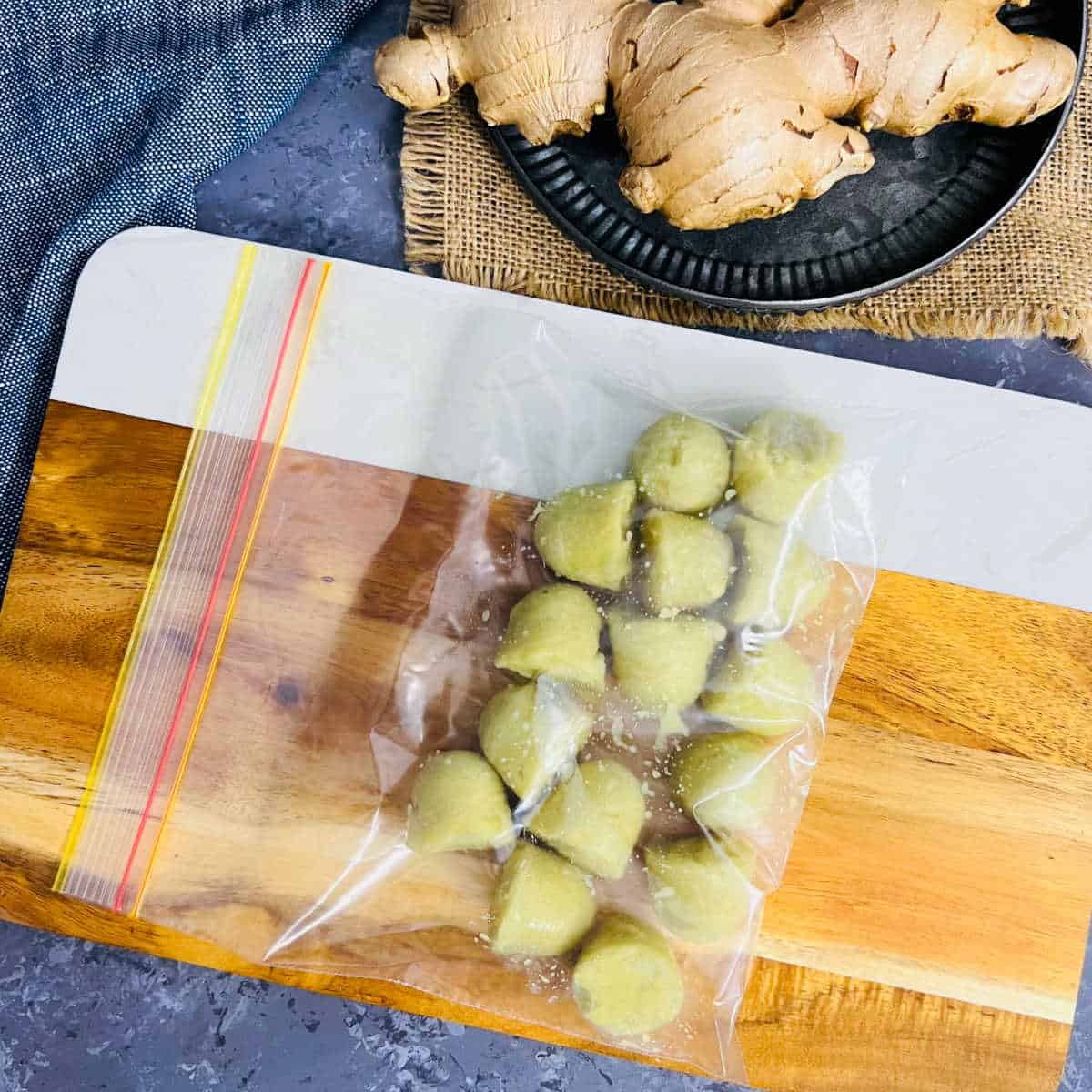
Step 4: Transfer the frozen cubes to a freezer-safe bag and store them in the freezer for up to one year. Remove as much air as possible before sealing.
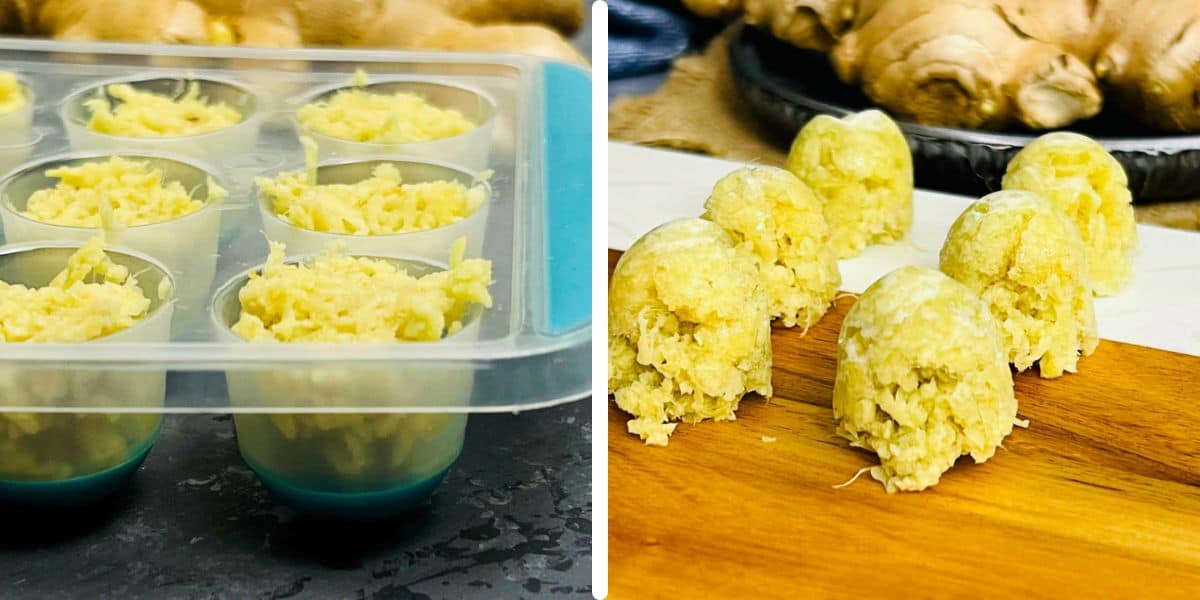
Step 5: To store grated ginger, use a Microplane grater or box grater to grate it. Portion and place them in ice cube trays. Freeze them and transfer them to a Ziploc bag or freezer-safe container for long-term storage.
Expert Tips
Use small ice cube trays that hold around one teaspoon of ginger paste. This way, they will be portioned, and each small portion can be taken for single use.
If you don't have access to a small ice tray, use a cookie sheet lined with parchment paper. Portion out the ginger paste and place it on a lined cookie sheet. Cover them (to prevent freezer burn) and flash-freeze them for a few hours before transferring them to a ziplock or airtight bag.
You can also freeze thin slices of ginger in the same way. Flash-freeze the ginger slices first and then store the frozen pieces in a freezer bag.
When storing the ginger in the fridge, keep an eye on molds. The peeled part of ginger may get molds. For every use, make sure you cut the ginger from the same side.
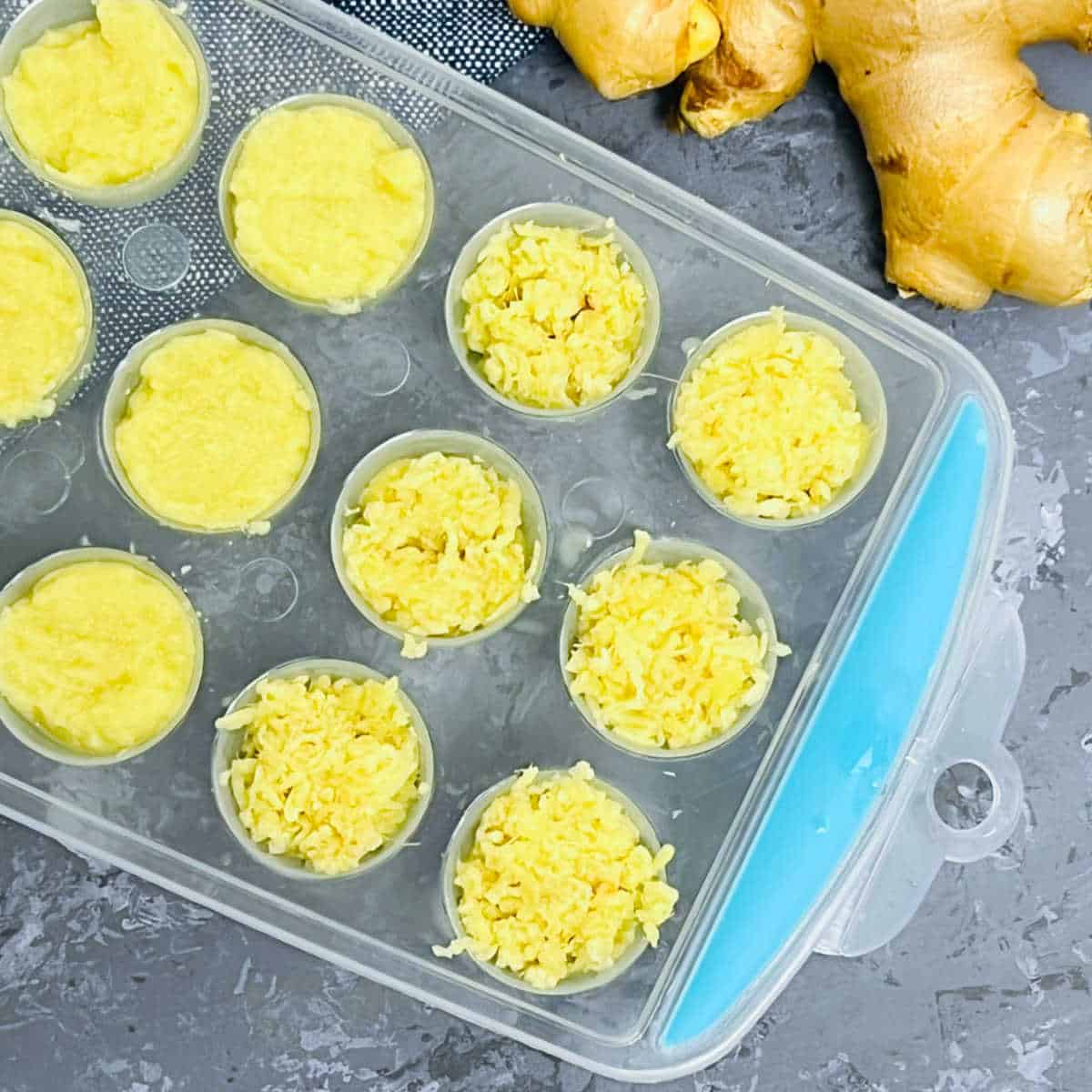
Recipe FAQs
You will find ginger in various stores like farmer's markets, Asian grocery stores, or regular supermarkets. There are two main types: young ginger, with a lighter flavor, and old ginger, which is more mature, stronger in taste, and stores better. Ginger is characterized by its irregular shape and knobby protrusions, with a "knob" typically referring to a 2-inch piece and a "thumb" indicating a 1-inch portion. Opt for ginger that is firm, smooth, heavy for its size, and free from blemishes, mold, or dry, wrinkled skin to ensure the best taste and flavor.
Unpeeled ginger root can last for one month when stored correctly in the refrigerator. The ginger paste can be stored for up to one week.
Unpeeled ginger root can be stored in the freezer for many months. The ginger paste can be stored for up to one year in the freezer.
Dried ginger powder can be used as a substitute. For one tablespoon of ginger or 1-inch piece of whole ginger, use ½ teaspoon of ground ginger. Dry ginger is also a great way to store it for a longer time.
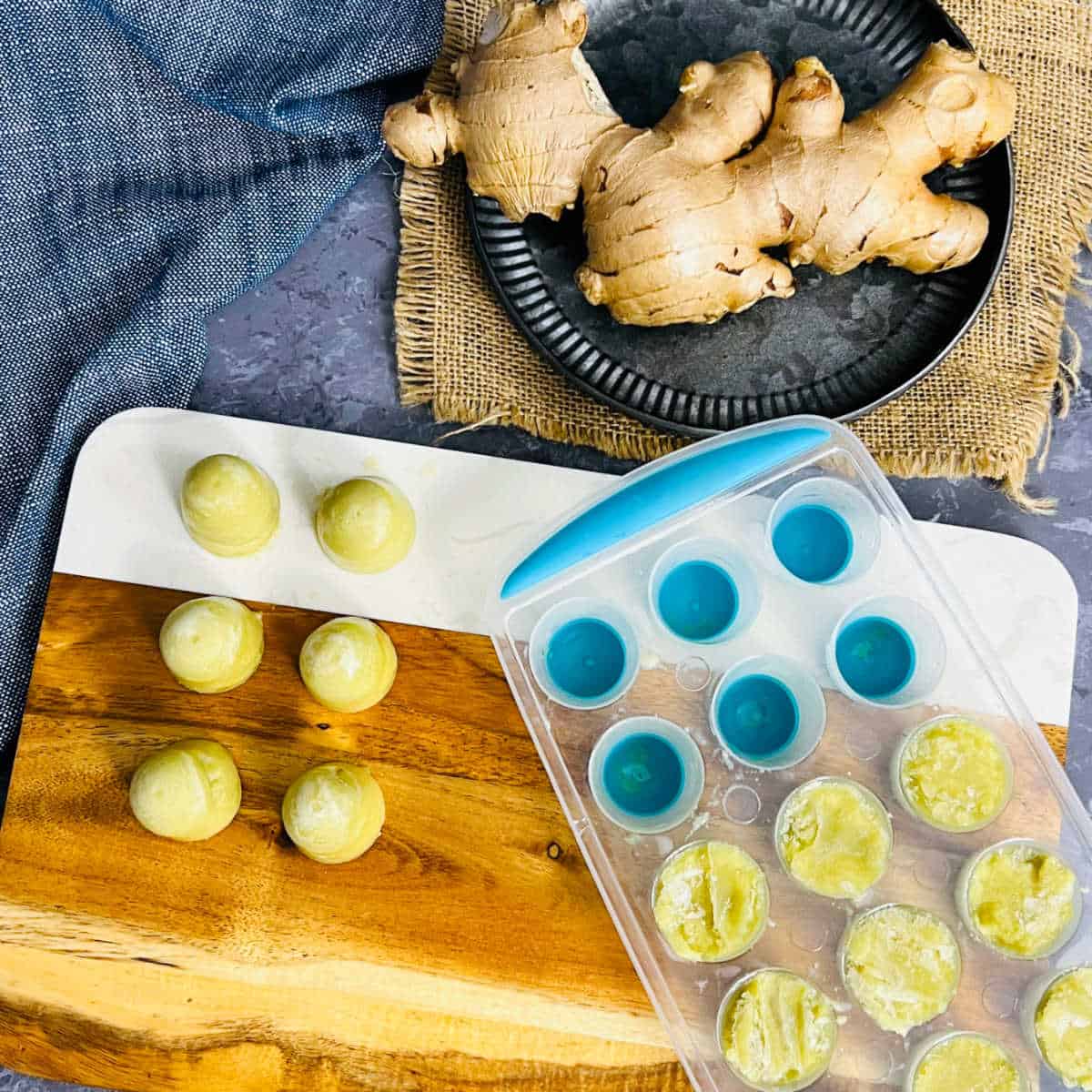
Recipe card
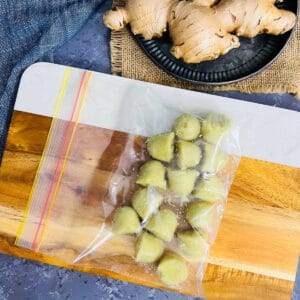
How to store ginger
Ingredients
- 1 cup fresh ginger (or as required)
Instructions
Prep the ginger:
- Wash the roots of ginger well in running water. Remove all the dirt and debris.
- Pat dry well using a kitchen towel. making sure all the water and moisture are removed. Alternatively, air-dry the cleaned ginger on the countertop.
Storing ginger root:
- At room temperature: If you are planning to use the ginger within 8-10 days, you can store it in a cool and dark place at room temperature. Place the clean ginger in a dry bowl and store it inside a cupboard.
- In the refrigerator: Lightly wrap the ginger in a paper towel and place it in a ziplock bag. Seal and place it in the refrigerator (in the crisper drawer). It should keep well for up to one month.
- Do not peel the ginger if you are storing it in the fridge as this may cause molds to form. Make sure you keep checking for any mold before using it.
Storing ginger paste:
- Peel the ginger and cut them into small chunks. Place them in a blender or food processor to make a fine or coarse paste.
- In the fridge: Place the ginger paste in a clean and dry air-tight container and store it in the refrigerator for up to one week.
- In the freezer: Place the ginger paste in icecube trays and place it in the freezer until it freezes. Transfer the frozen cubes to a ziplock pouch and store them in the freezer for up to 6 months.

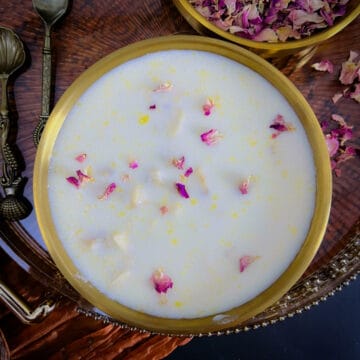
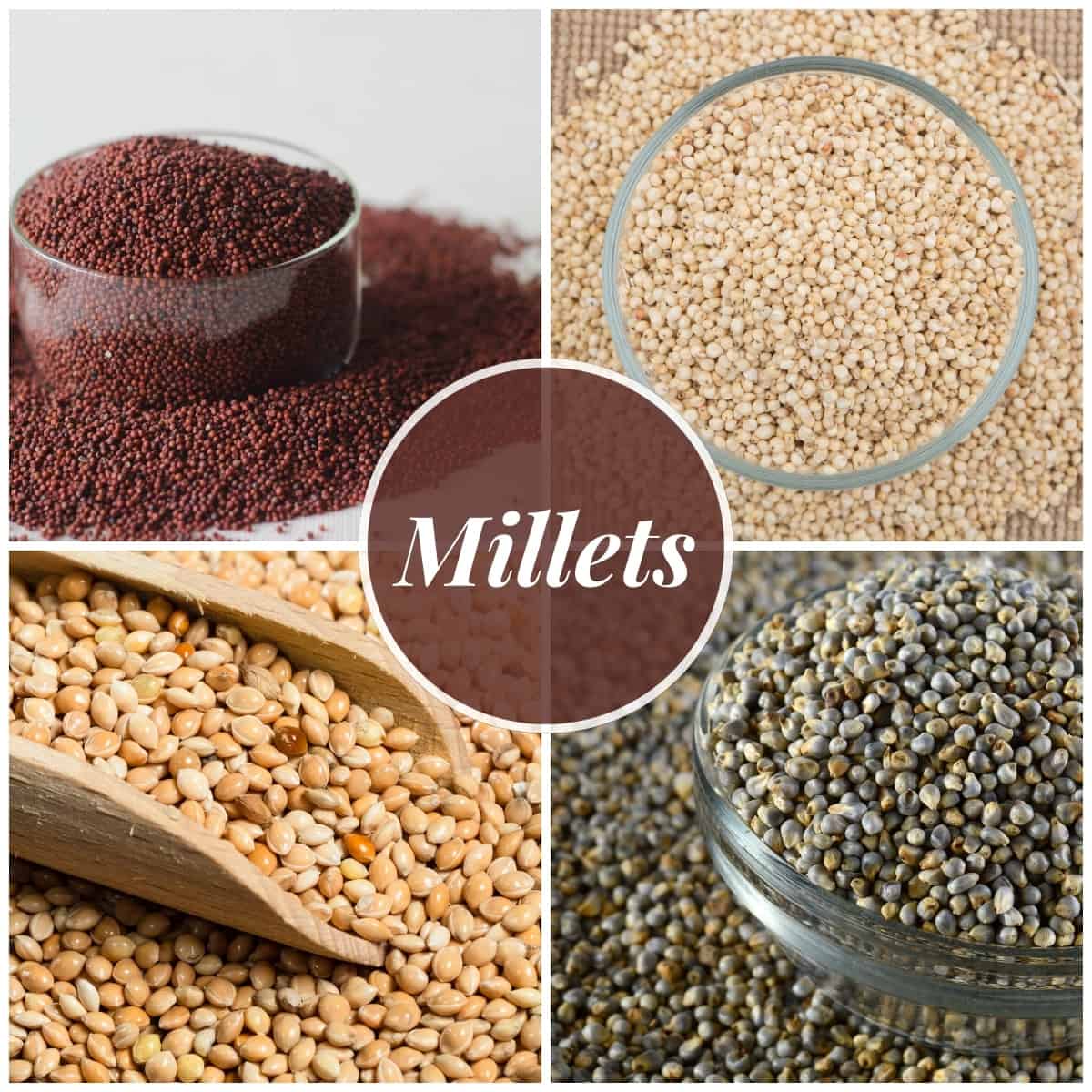
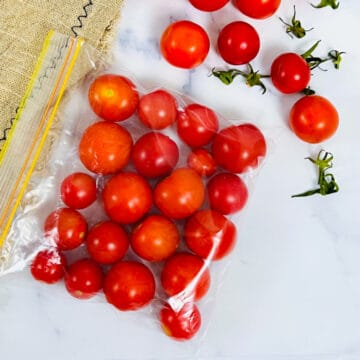
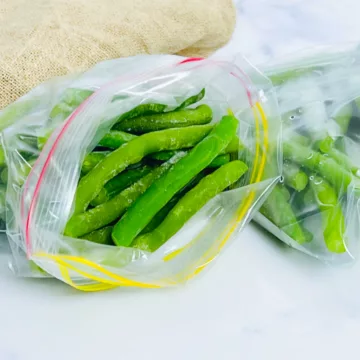
Comments
No Comments